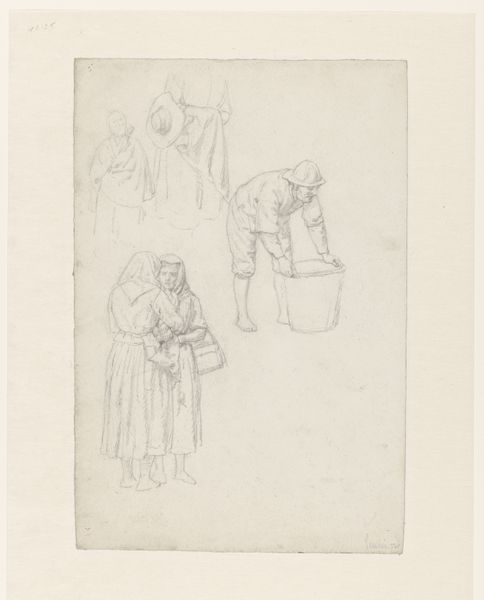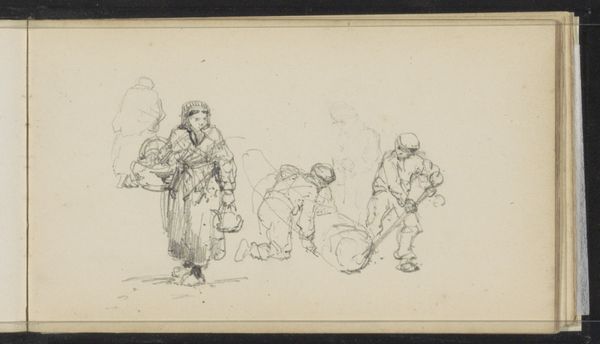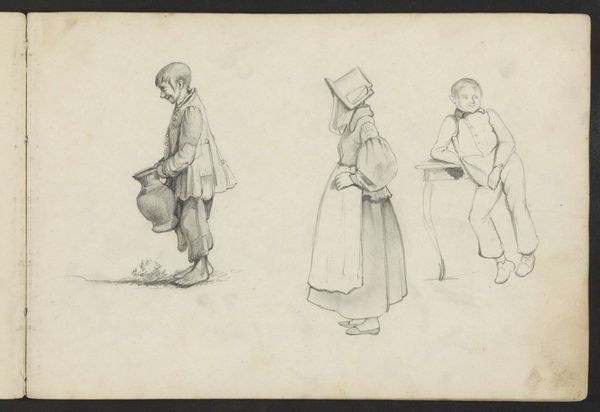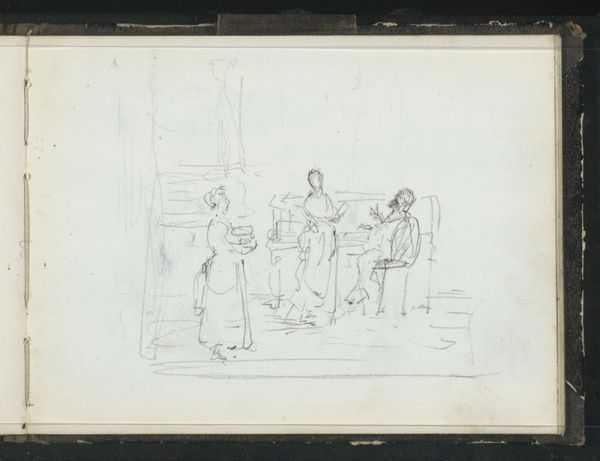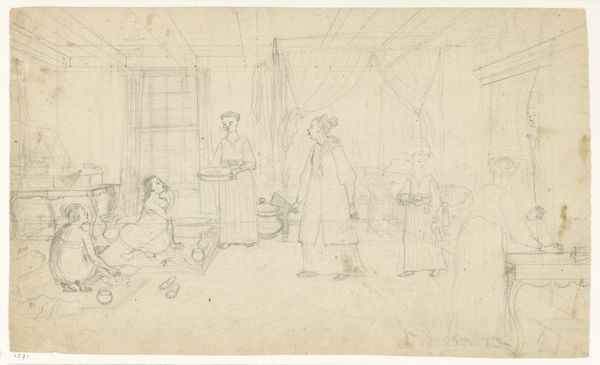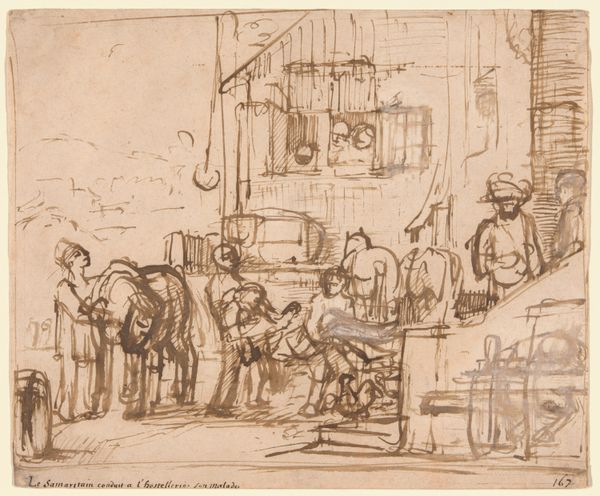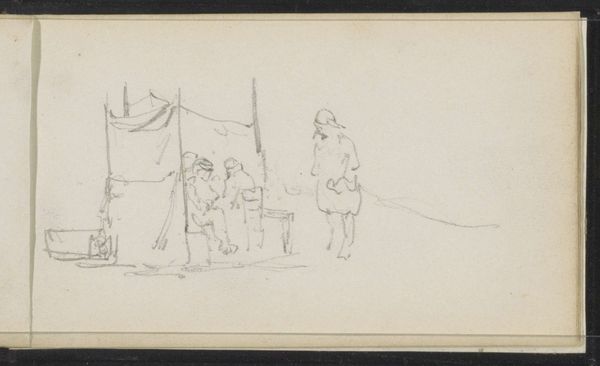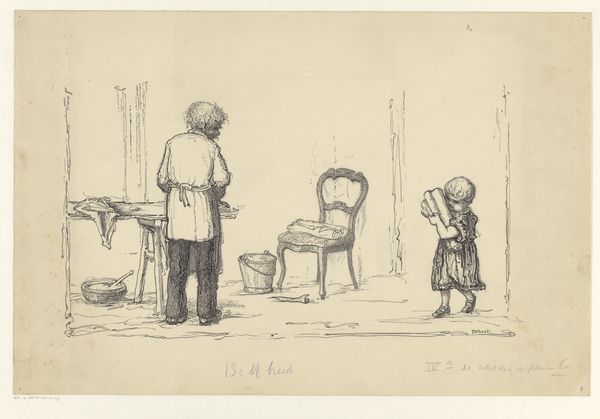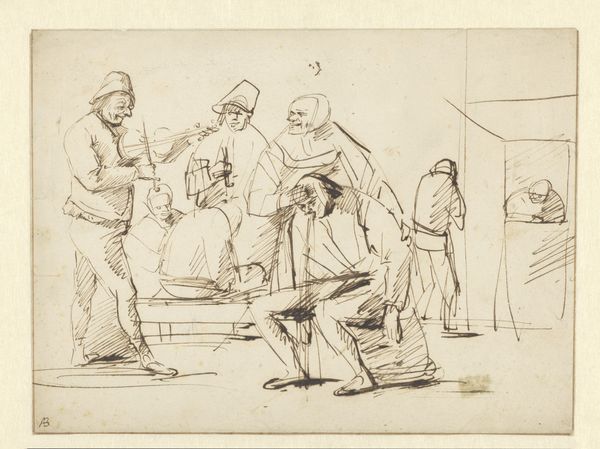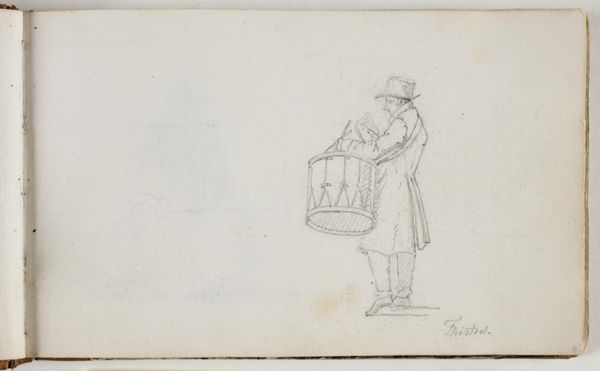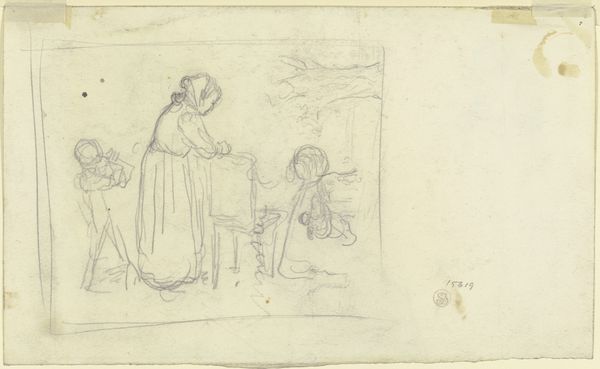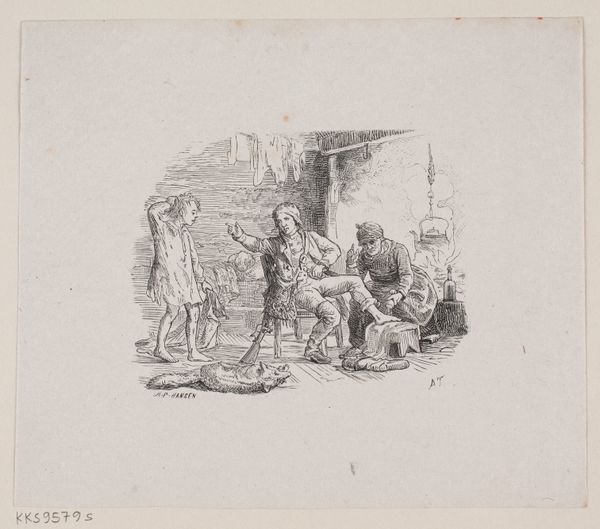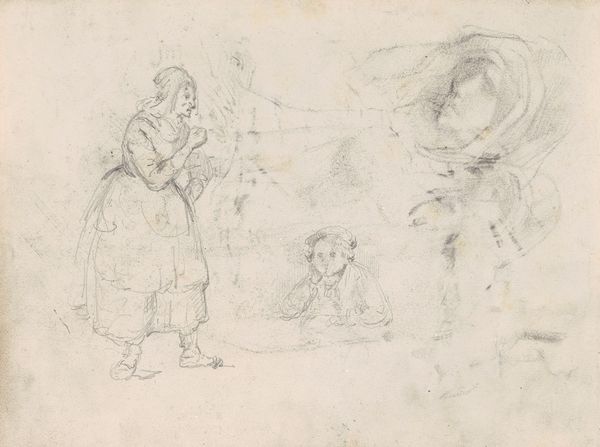
drawing, pencil
#
drawing
#
aged paper
#
pen sketch
#
sketch book
#
landscape
#
personal sketchbook
#
sketchwork
#
pen-ink sketch
#
pencil
#
pen work
#
sketchbook drawing
#
genre-painting
#
storyboard and sketchbook work
#
sketchbook art
#
realism
Copyright: Rijks Museum: Open Domain
Curator: Here we have Jozef Israëls' drawing, "Boerenkar en een vrouw die water in een ton giet", placing us somewhere between 1834 and 1911. It’s currently held in the Rijksmuseum. What strikes you first about this sketch? Editor: The starkness of it. It’s all these delicate lines on aged paper, hinting at a simple, probably arduous, existence. It's like peeking into someone’s memory. Melancholy, definitely melancholy. Curator: Absolutely. Israëls was deeply interested in the lives of ordinary people, reflecting a broader movement in art towards Realism. We see the woman drawing water, a common daily chore represented throughout history. Editor: It's funny how this one scene distills centuries, isn’t it? I'm picturing all those "women at the well" archetypes. It also feels very intimate, like a candid observation instead of some grand allegorical gesture. Curator: Precisely! Israëls masterfully avoids romanticizing rural life, instead showing what he knows of that honest, essential act. The very act of filling something could signify nurturing or purpose itself, if we interpret it. It appears as part of our subconscious in ways we fail to remember. Editor: I see what you mean, these archetypes show up and reappear throughout history. Though there’s this wagon off to the side, a little crooked. Adds to the off-kilter feel. There is no neatness, I get the mood. The impermanence, it has weight, but it feels temporary too. Curator: Indeed. Notice how Israëls captures the weight and movement of water, almost ethereal as it pours. Water is frequently a symbol, connoting purification, change and rebirth, wouldn't you agree? Editor: Oh, absolutely, which is slightly at odds with the sort of worn reality sketched everywhere else. It seems this life, it persists; cycles keep returning like water. Curator: This artwork feels almost like a visual haiku. A few simple lines capture a whole world of emotions and experiences, showing just enough to suggest many more. Editor: And the bare minimum becomes the most affecting. You know, now that you say all this I might come back for another look. I can certainly stand a look into my soul for a bit. Curator: May you find beauty, like Israëls in these simple acts, I believe that would truly reward him as the great painter he remains today.
Comments
No comments
Be the first to comment and join the conversation on the ultimate creative platform.
